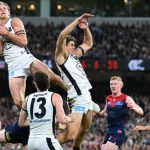British TV of the 1970s (clockwise from top left): Animal Kwackers, Survivors, The Wombles and The Good Life.
Hunting for television perfection, I spend an inordinate amount of time trawling YouTube. As a television reviewer by trade, I delude myself that it’s for “research purposes.”
But it’s actually the romantically nostalgic yearning for a Friday night when I’m 12, which typically unfolded thus … eating a donut with orange icing from Downyflake at Southland; reading the English comic “Whizzer and Chips”; watching Jim Nabors sing “Thank God I’m a Country Boy” on The Muppet Show, which leads in to Lynda Carter in “Wonder Woman”.
Then, switching to the ABC gardening program “Sow What”—if only to hear host Kevin Heinze wish me “cheerio” at the end; and winding up with the BBC snooker program “Pot Black” — hoping the Dracula-like Ray Reardon will be featured this week.
Powers beyond my control forced me into taking days off school in the ‘80s because there weren’t VCRs available for purchase.
If I wanted to see black-and-white episodes of the Australian cop show “Homicide” repeated in the afternoon or witness the new interactive talk show experience from America that was “Donahue”, there was no choice. Mongolian yurts, Steinbeck’s “The Pearl” and Tudor times could wait, television couldn’t.
Of course, recording devices altered the schedule, and YouTube completely changed the game. And in the search for TV nirvana, YouTube algorithms are my best friend.
I find myself browsing nostalgically through British children’s TV of the 1970s, when things take a distinctly gruesome turn. The algorithms are guiding me from the green and pleasant land of “The Magic Roundabout”, “Follyfoot” and “The Wombles”, and I am falling down the rabbit hole into the dark satanic mill of “Codename Icarus” and “Children of the Stones”.
The British landscape of the ‘70s is characterised by industrial strikes, daytime power cuts, bread shortages and rubbish piling up on the streets.
In the late afternoon, the kids are tuning into “Ace of Wands”, the fantastical adventures of a magician called Tarot and his Malayan fishing owl companion, Ozymandias, solving mysteries that border on the occult.
Inside at night, the adults are watching posh, cravat-clad characters in Britcoms like “The Good Life”, “To the Manor Born” and “Father, Dear Father”.
Watching what remains of “Ace of Wands” on YouTube is somewhat unnerving viewing. Opening with a prog-folk theme tune, characters include the following: sinister spoon-playing street musicians; a ventriloquist dummy who persuades children to destroy their classroom; and Mama Doc’s doll hospital where the patients bleed when broken.
Which of these generational classes of television best reflect the dark, societal unrest occurring on the streets of London in the 70s?
By now the algorithm has me in its clutches. I look to the right of screen, and there lurks the morbid COVID-19 appropriate suggestion: the 1975 BBC post-apocalyptic drama, “Survivors”.
It’s created by Terry Nation, who is also responsible for conceiving the Daleks characters from “Doctor Who”.
My finger hovers over the mouse, as I know of this show. Survivors struggle to stay alive in the wake of a global pandemic known as the Death, that has wiped out 99.98% of humanity, a plague that is accidentally released in a Chinese science lab and spread through air travel. I watch the first episode: “The Fourth Horseman.” The remaining 37 will have to wait.
Strangely, the YouTube algorithm has decided I need a musical interlude. It beckons me to click on a clip from the show, “Animal Kwackers”.
I comply and am confronted by a live-action performance of Sweet’s “Blockbuster” by a four- piece band wearing animal suits. Leader Rory the lion has retreated to playing stand-up piano, while Twang the monkey, resplendent in a floppy denim cap and overalls, takes lead vocals and channels Slade’s Noddy Holder.
Boots, the eye-patch clad tiger, shares vocals, while Bongo the dog bangs away on the drums, looking like a hybrid of Drooper and Fleegle from the Banana Splits. Defying the algorithm, I skip the gang’s ethereal and trippy rendition of “Lucy in the Sky with Diamonds,” even with Rory back upfront.
Instead, I click on a performance of XTC’s tune “Making Plans for Nigel”—perfectly sampled recently in “Black Mirror: Bandersnatch”—as performed by the cast of the children’s variety show “Crackerjack”. I’m not sure this show initially ever made it to Antipodean broadcast television. The cast’s hammy vaudevillian antics recall the pantomime-esque Australian show of similar vintage, “Adventure Island”.
In a recent Guardian retrospective of the song, XTC songwriter and singer Colin Moulding — perhaps tongue in cheek — said of his work: “Leslie Crowther and Peter Glaze even sang it on the teatime kids’ TV program ‘Crackerjack’. My greatest honour.”
With its big band arrangement, this “Nigel” certainly outshines anything on the 1995 tribute album “A Testimonial Dinner: The Songs of XTC”.
So, this is what you get when you place your faith in the YouTube algorithm: drama, comedy, song, dance, tragedy. Type in a favourite show and take a trip. Your journey can be a glorious, hilarious, terrifying, educational experience through sight and sound.
To Be Continued …













Blake’s 7 was a huge hit in my shared house. We were late teens and apprentices . A beerand a cone .
Might be time to check out Catweasel, bizarre on Aust TV in the 70s.